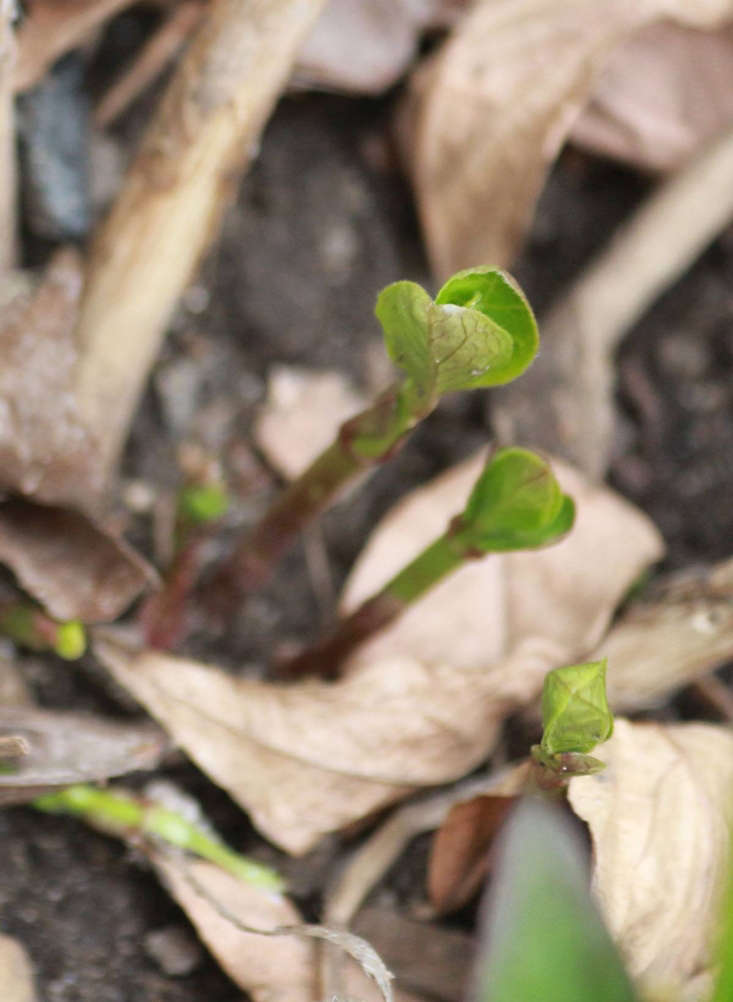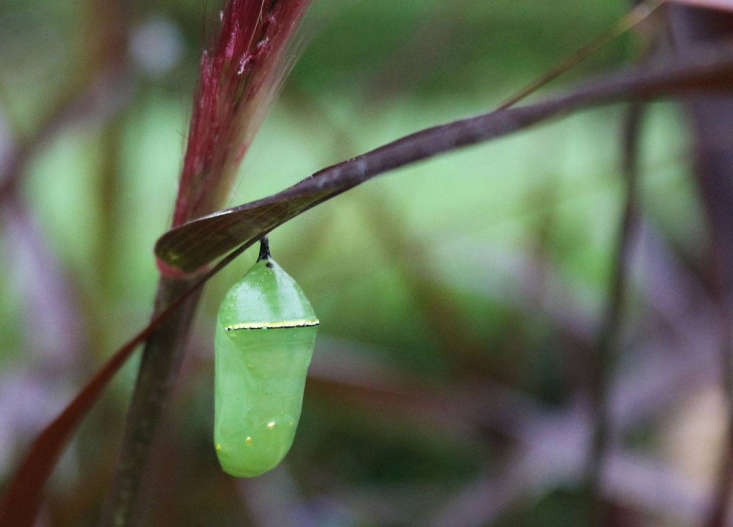One of the most consistent pleasures of my New York City gardening life has been the small satisfaction of feeding or sheltering insects who are passing by. Whether that small garden has been on a roof, a deeply recessed terrace, or in a backyard, somehow, they have found the flowers. As we learn more about the importance of conserving biodiversity—a single word that encapsulates a bewilderingly important concept of interdependence—our own role in its demise and revival is constantly brought into question. What can one gardener do? There are many answers to the question, but I chose one:
Plant milkweed.
Photography by Marie Viljoen.
Common Milkweed

Above: Neck-and-neck with honey bees in declining pollinator prominence, monarch butterflies are under pressure, and are succumbing to it. The threat of extinction hovers, dictated in large part by the herbicides (Roundup features prominently) sprayed onto milkweeds, which are the most important plant in the monarch’s life cycle. The butterflies lay their eggs on milkweed leaves. The caterpillars (seen here on common milkweed, Asclepias syriaca) emerge, eat the leaves and tender stems, and later pupate, before metamorphosing into new beauties. The butterflies themselves feed on a wider variety of foods, but their larvae only eat milkweed.
Swamp Milkweed

Above: I grow two milkweed species. Swamp milkweed (Asclepias incarnata) blooms in mid to late summer, luring butterflies with its nectar-rich flowers.

Above: My first swamp milkweed plant was grown by Glover Perennials, based on the North Fork of Long Island. Jim Glover supplies many Northeast retail nurseries with his native stock.

Above: I coveted the plant after seeing it in prolific bloom in Central Park.

Above: Swamp milkweed is true to its name. It does not like to dry out, so is a good choice for areas with consistent rainfall. Although it is rhizomatous, it is far less aggressive than common milkweed (Asclepias syriaca), and can be grown well in roomy pots. Water consistently and deeply.

Above: Emerging in mid spring, the new season’s shoots appear even after hard winters. Swamp milkweed is hardy from USDA zones 3 to 9.

Above: Its long-lasting flowers provide weeks of nectar for butterflies and bees.

Above: In Brooklyn Bridge Park’s Flower Field on Pier 6, the blooms persisted in 2016 until early fall.
Purple Milkweed

Above: Purple milkweed (Asclepias purpurascens) is a species that blooms in early summer.
Butterfly Weed

Above: Pictured here on New York’s High Line, spectacular butterfly weed (Asclepias tuberosus) boosts biodiversity in an intensely urban situation.

Above: Eastern Tiger Swallowtails are regular visitors.

Above: Dwindling wild populations of common milkweed (a plant that is edible in every stage from shoot to seedpod for humans), encouraged me to begin growing this deeply perfumed perennial. It is pictured here in a sea of invasive mugwort (Artemisia vulgaris), but usually falls victim to herbicides. Farmers do not like its colonizing ways, which interfere with their other crops. It is also sprayed where it volunteers beside highways and in open lots, and is a plant we should be nurturing for a host of reasons, not least of which is its cash potential to open minded growers.

Above: An open umbel of scented common milkweed flowers teems with insect life. I have never seen as many insects attracted to a flower. It’s like the African savanna in a tea cup, from grazers to predators, aphids to ladybugs, bees to butterflies. I have learned that common milkweed will never grow in a neat vegetable garden row. Its tenacious runners spread far underground and new shoots can and will pop up at random over the course of the season and in the following years. Grow this lovely plant where it has room to move.

Above: While tropical milkweed, not native to North America, can also feed your smallest garden visitors, and especially monarchs, evidence seems to suggest that its planting can contribute to disease in the butterflies. This is linked not to the plant, per se, but to its availability out of the monarch’s regular local breeding season. Monarchs seem to be healthier when milkweeds are available seasonally, and not year round. A better choice is one native to your region. With dozens of species to choose from, that is not hard to do.

Above: A delicate monarch chrysalis is the rare and most visible reward to a gardener who cultivates pollinator-friendly plants.
As individuals, our solo practices can influence larger pictures, but only if we work together and remain as well informed as possible. Our own spaces, community gardens, park and roadsides, can save insect lives and enrich our own.
N.B.: For more, see:
- 10 Garden Ideas to Steal from New York’s High Line Park.
- Weeds You Can Eat: Milkweed Buds.
- Gardening 101: Milkweed.
Finally, get more ideas on how to successfully plant, grow, and care for milkweed with our Milkweed: A Field Guide.
Finally, get more ideas on how to plant, grow, and care for various perennial plants with our Perennials: A Field Guide.












Have a Question or Comment About This Post?
Join the conversation (3)